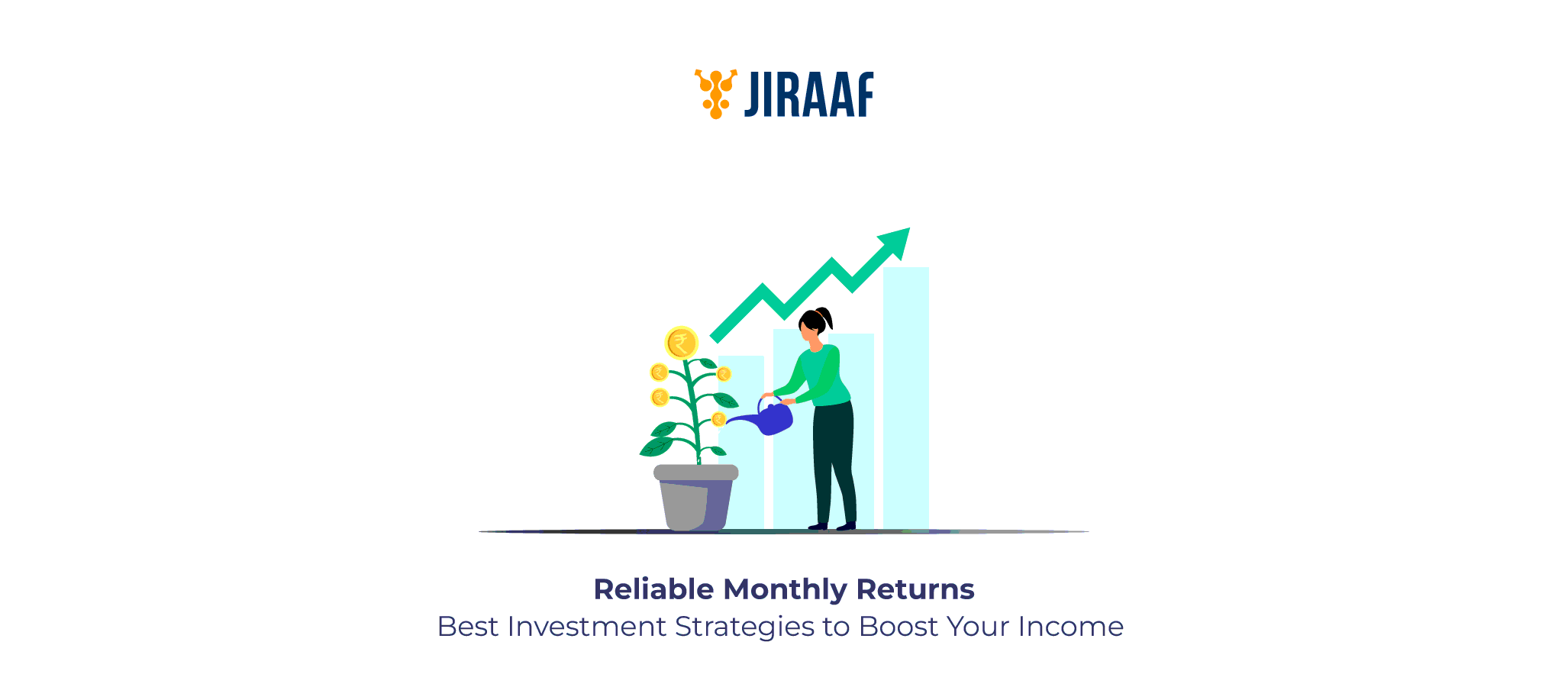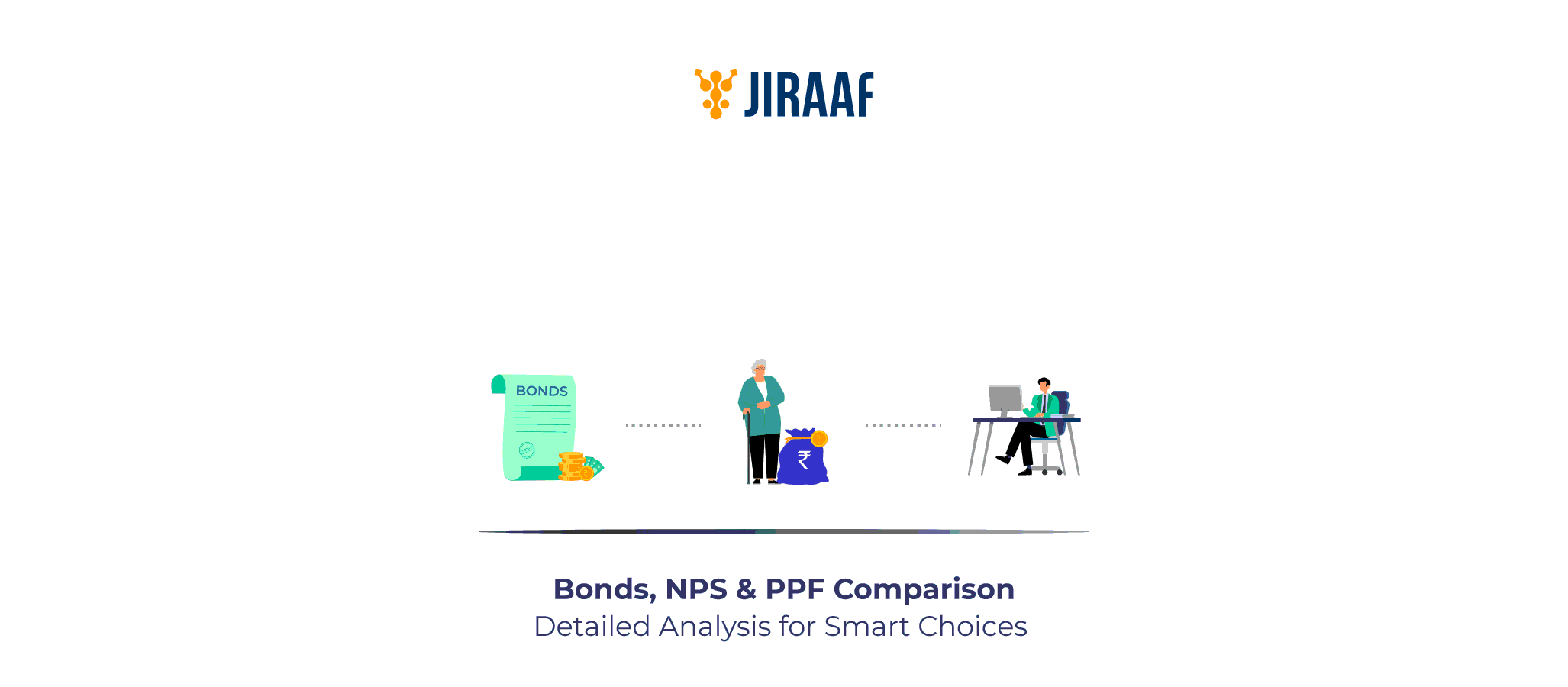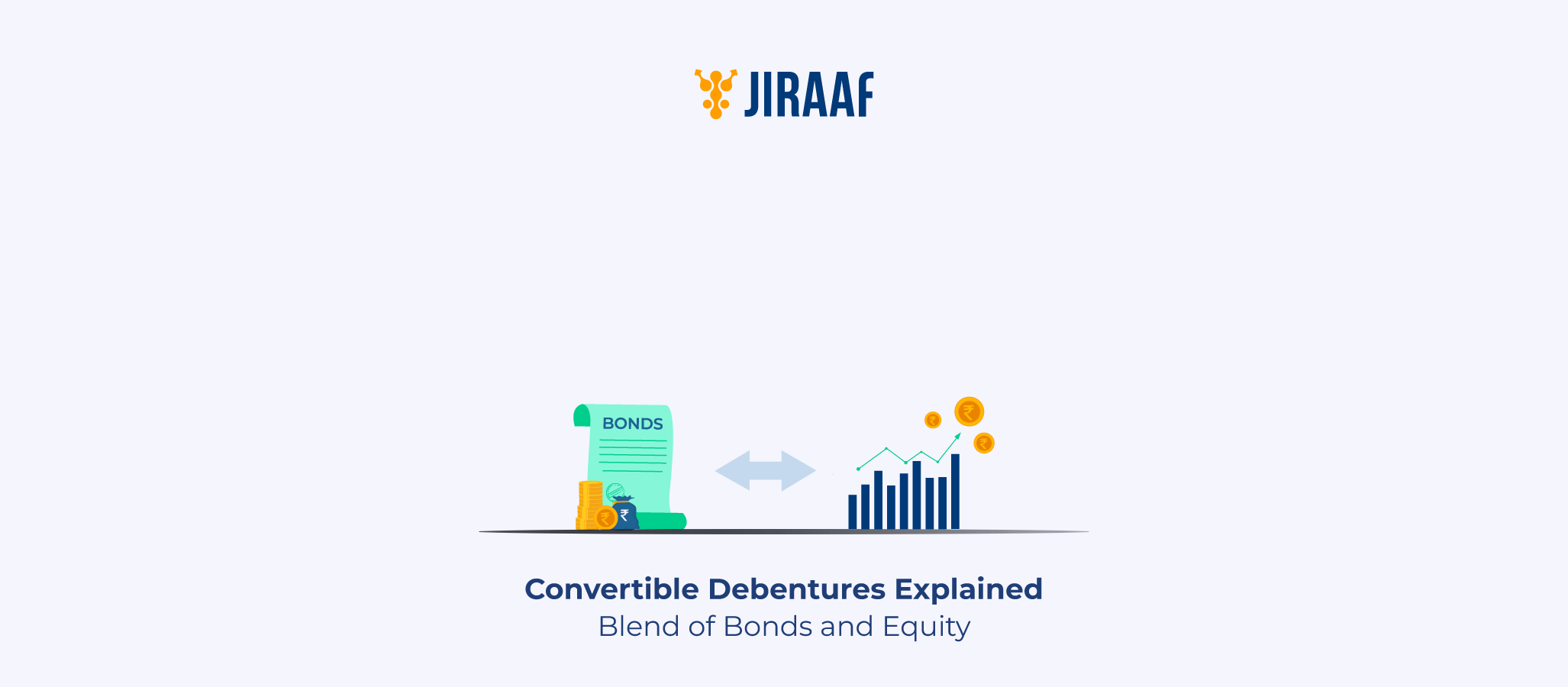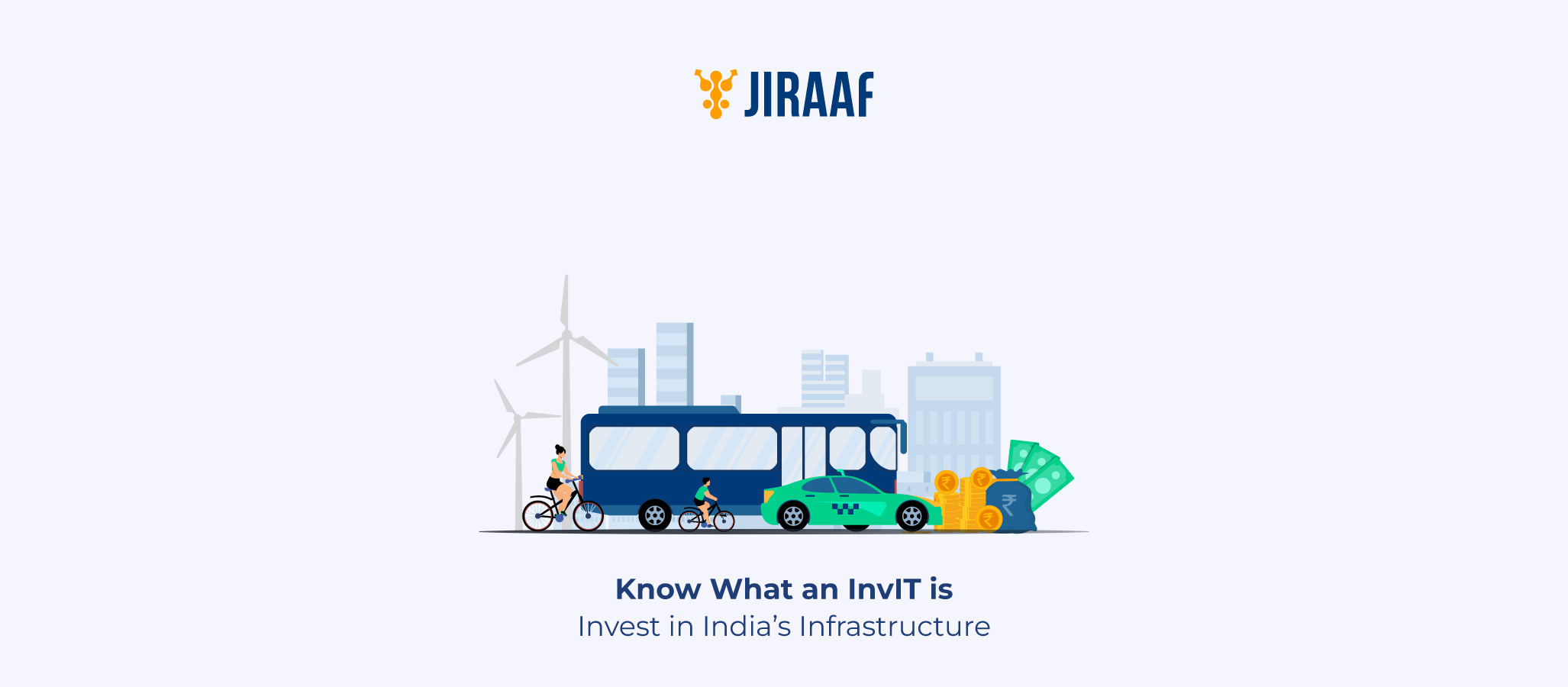They say time and tide wait for none. We say the same is true for expenses. Groceries, rent, EMIs—they show up every month, no matter what your financial condition is. Now, you need to be prepared for this, but there are smart ways to do that, like investing in instruments that pay out monthly returns.
Monthly fixed income investment plans are just what we are talking about. They help investors like you ride out small market turbulences and secure steady cash flow for your needs.
This blog explores the best ways to build that extra income source smartly.
Why Choose Monthly Income Investments?
These plans deliver regular payouts, providing you with dependable cash flow. Whether it’s covering expenses, supplementing your salary, or building a safety net, monthly income investments offer the stability you need. They give you a consistent income.
Fixed Deposits with Monthly Payouts
Fixed Deposits (FDs) are one of the most reliable ways to earn monthly interest income. They provide guaranteed returns with very low risk, making them suitable for conservative investors or anyone seeking a steady cash flow.
Interest Rates (2025)
- Bank FDs: 5.5% – 7.1% per annum (monthly payout option available)
- NBFC FDs: 7.0% – 8.5% per annum (higher than bank FDs, but slightly higher risk)
Key Features
- Monthly Payouts: Interest can be credited to your savings account every month, creating a predictable cash flow.
- Safety vs Returns: Bank FDs are fully secure, while NBFCs offer higher returns but with marginally higher credit risk.
- Easy Comparison & Investment: Platforms like Jiraaf help you compare rates across banks and NBFCs, ensuring you choose the best option for maximum monthly income.
This makes FDs a perfect steppingstone before exploring government-backed schemes like POMIS, which offer slightly higher safety with fixed monthly payouts.
Post Office Monthly Income Scheme (POMIS)
If reliability is your top priority, the Post Office MIS delivers exactly that—steady income backed by the government of India. It’s one of the safest monthly income investment plans in India.
Key Features
- Interest Rate (2025): 7.4% per annum; the interest is fixed for tenure, ensuring no surprises from market fluctuations. Payments are made directly to your savings account monthly, making it a stable option.
- Capital Protection: Your investment is sovereign backed, which means your money is 100% safe regardless of changes in the economic conditions.
- Investment Limits:
- Single account: Individuals can deposit a minimum of ₹1,500 up to a maximum of ₹4.5 lakh.
- Joint account: Couples can invest up to ₹9 lakh jointly, doubling the limit.
- Minor account: Parents can open an account for children with limits up to ₹3 lakh.
These investments are ideal for conservative investors, especially retirees who prefer safety over higher returns. But if you’re a senior citizen seeking higher returns and tax benefits, SCSS can be a smart choice.
Senior Citizens Savings Scheme (SCSS)
For retirees, the Senior Citizens Savings Scheme (SCSS) is one of the best investment plans for a monthly income in India.
Key Features
- Interest Rate (2025): Offering 8.2% per annum; this is among the highest rates offered by any government-backed scheme, giving senior citizens more than bank FDs or POMIS. The interest is paid quarterly but can be used as a steady income.
- Eligibility: SCSS is available to citizens aged 60 and above, and in some cases, 55+ retirees under the Voluntary Retirement Scheme (VRS).
- Tax Benefits:
- Investments up to ₹1.5 lakh qualify for deductions under Section 80C, helping reduce taxable income.
- Interest income is also eligible for relief under Section 80TTB (up to ₹50,000 deduction per year).
- Capital Safety: It is fully backed by the government of India, ensuring zero risk of default.
It serves as a go-to scheme for retirees who want high, safe, and tax-efficient returns.
However, younger investors or those looking for growth may prefer Mutual Fund Monthly Income Plans (MIPs).
Mutual Fund Monthly Income Plans (MIPs)
If you want a mix of stability and growth, mutual fund MIPs are the ideal choice. They are hybrid funds that combine the safety of debt with the growth potential of equity.
Key Features
- Portfolio Split: About 70–80% in debt instruments (like bonds, government securities) ensure stable income, while 20–30% in equities provide the chance for higher growth.
- Payout Options: Investors can opt for monthly, quarterly, or annual payouts. Alternatively, using a Systematic Withdrawal Plan (SWP) can simulate a salary-like monthly cash flow.
- Returns: Over the long term, MIPs generally deliver better returns than FDs or POMIS. However, returns are not guaranteed and can fluctuate with markets.
- Risk: Moderate. While debt reduces volatility, the equity portion adds some risk—making MIPs suitable for those comfortable with minor fluctuations.
Monthly Income Schemes are perfect for middle-aged professionals who want a steady secondary income stream without locking funds for years.
For retirees who prefer guaranteed lifelong income, annuities and pension plans are the next logical step.
Annuities and Pension Plans
When stability matters more than growth, annuities and pension plans provide peace of mind with predictable income.
Key Features
- Annuities: You make a lump-sum investment with an insurance company, and in return, they guarantee a monthly income for life (or for a fixed period). This is especially useful for retirees with a large corpus.
- Pension Plans: These are typically built during working years. Investors accumulate funds, which later convert into a regular payout after retirement.
- Returns: They offer returns usually in the 4–7% range, which is lower than market-linked products but 100% predictable.
- Best For: Retirees or risk-averse investors who prioritize assurance of income rather than chasing higher yields.
These plans are like creating your own pension—stable, lifelong, and worry-free.
But for those who want cash flow plus wealth creation, dividend stocks and REITs may be better.
Dividend-paying Stocks and REITs
For investors seeking both regular income and long-term capital growth, dividend stocks and REITs are strong contenders.
Key Features
- Dividend Stocks: Large, established companies (like IT, banking, or FMCG firms) pay regular dividends. A portfolio of 8–10 high-quality dividend-paying stocks can provide 3–6% yields, plus capital appreciation over time.
- REITs (Real Estate Investment Trusts): These focus on commercial real estate such as office spaces and malls. They are required by law to distribute most of their rental income as dividends, often yielding 7–9% annually.
- InvITs (Infrastructure Investment Trusts): Like REITs but focused on infrastructure assets like toll roads and power projects, offering consistent income from usage fees.
- Tax Treatment: Dividends, interest, and rental income from REITs and InvITs are generally taxable (with TDS above certain limits), yet they remain attractive for their steady payouts, inflation-hedged growth, and diversification benefits. Ideal for investors who don’t mind short-term volatility in exchange for income + growth potential.
If you’d rather stay in the fixed-income space but want better yields than FDs, corporate bonds and NCDs could be the solution.
Corporate Bonds and NCDs with Regular Interest Payouts
Corporate Bonds and non-convertible debentures (NCDs) are excellent for investors who want fixed-income investments with monthly or quarterly payouts.
Key Features
- Returns: Typically range from 8% to 15% annually, much higher than bank deposits, making them attractive for income-seeking investors.
- Payouts: Depending on the issue, interest can be paid monthly, quarterly, semi-annually, or annually, offering flexibility for cash flow planning.
- Platforms: Today, platforms like Jiraaf provide curated access to corporate debt opportunities, simplifying the investment process for retail investors.
- Risk: Safety depends on the company’s creditworthiness. AAA-rated bonds are relatively safe, while lower-rated ones offer higher yields but carry more risk.
- Liquidity: Listed NCDs can be traded in the secondary market, giving investors an exit option before maturity.
A strong option for investors willing to accept moderate risk in exchange for a higher monthly income.
Tips to Maximize Your Monthly Income from Investments
The right investment is just the beginning—how you manage it turns savings into steady monthly income, balancing growth and risk for every stage of life.
- Diversify across options: Don’t depend on just one source, like FDs or bonds. Mix safe options (POMIS, SCSS) with growth-oriented ones (MIPs, dividend stocks) to balance risk and returns.
- Stagger your investments: Choose schemes with different payout cycles — monthly, quarterly, or annually. This ensures cash flow throughout the year instead of bunching up at one time.
- Match investments to expenses: Align income instruments with your regular obligations. For example, use POMIS payouts for monthly household expenses, while quarterly SCSS payouts can cover insurance premiums.
- Reinvest a portion: Even if the goal is income, reinvesting 20–30% of payouts into equity mutual funds or recurring deposits can help grow your wealth while you enjoy steady returns.
- Prioritize safety first: For retirees or risk-averse investors, focus on government-backed options and AAA-rated bonds before venturing into higher-risk instruments.
- Review and adjust regularly: Interest rates and market conditions change. Revisit your portfolio every year to shift money into better paying, but safe, instruments.
Maximizing your monthly income is about more than just returns; it’s about thoughtful planning—let’s see how to pick the strategy that fits your goals.
With so many monthly income options available, the key to success lies in smart execution. Let’s explore how you can maximize your returns and build a truly reliable income portfolio.
Conclusion: Choosing the Best Plan for Your Needs
So, what’s the best monthly income investment plan? The answer depends entirely on your individual goals and risk appetite. If safety is your priority, government-backed options like POMIS or SCSS are ideal, providing reliable returns and peace of mind. For those seeking growth alongside income, MIPs or dividend-paying stocks and REITs can help your money work harder while still delivering regular cash flow. Retirees looking for predictability may find annuities and pension plans particularly suitable.
For investors willing to take on moderate risk, corporate bonds and NCDs offer higher yields without extreme volatility. Ultimately, the right choice comes down to your financial goals, age, and comfort with risk. By carefully combining these options, you can create a balanced portfolio that turns your investments into a dependable second paycheck—one that arrives every month to support your lifestyle and financial needs.









